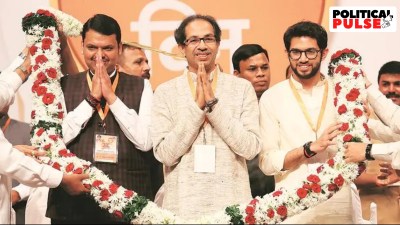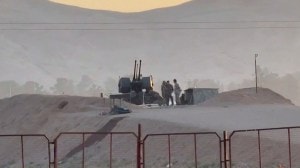- India
- International
On top of a mountain, buried under years of history, secrets of Raigad are unearthed
The project also includes the development of 21 neighbouring villages, as well as Jijauwada, which was the home of Shivaji Maharaj’s mother Jijamata, and the road that connects to Mahad, a town located about 25 km from the fort.
 At the site, 350 spots have been identified for carrying out excavations. Express
At the site, 350 spots have been identified for carrying out excavations. Express
In a first, a team of archaeologists will undertake a massive exercise to unearth the remains of Raigad, the erstwhile Maratha empire’s sprawling capital that once thrived at the eponymous fort in the Sahyadri mountain ranges.
A team of experts from the Archeological Survey of India (ASI) and Deccan College, Pune, have been carrying out excavations at the site for about three months.
Work on the Rs 600-crore project is being carried out under the supervision of the Raigad Development Authority, a special body functioning under the state government, which is headed by Sambhaji Raje, a descendant of Chhatrapati Shivaji Maharaj. “Along with restoration, the idea behind the project is to understand what the empire looked like… today, most of the ruins have been covered under layers of earth,” Raje, who is also a Rajya Sabha MP, told The Indian Express.
Unlike many other forts in Maharashtra, which are built on a chain of interconnected mountain ranges, Raigad stands tall on an isolated block of mountain with steep slopes, which are extremely dangerous to climb. While it is commonly believed that the capital of the Maratha empire was invaded by the British, who set it on fire, archaeologists at the site have found no indication of such a blaze.
Vice-Chancellor of Deccan College, Vasant Shinde, who is monitoring the progress of the project at the historic and sensitive site located in Raigad district, said, “After defeating the Marathas, the British destroyed all these forts… But so far, we have found no evidence of the fire recovered from the fort.”
From the 350 spots at the site identified for carrying out excavations, students from Deccan College have managed to excavate one of the hundreds of building complexes of the empire. “This was a wada (traditional cluster of houses)… the team managed to recover rare artefacts from the site, such as Persian pottery, earrings, mortar and pestle and gold threads, among others,” said Raje. Buried under layers of earth, the wada has multiple storeys, elaborate stairways, a main verandah and structured outer walls.

“Nearly 70 per cent work on the site has been completed…,” added Raje. During the course of the project, the researchers are hopeful about understanding the importance of each building and learning about the various activities that were regularly carried out there, as they believe it will shed further light on the Maratha kingdom, including the hundreds of people who lived at the fort.
As it will be a difficult task to excavate all 350 spots, Shinde has suggested that the team use Ground Penetration Radar (GPR) to survey the area. “This method will provide basic details of each spot, such as the number of buildings present, and help in deciding which spot needs to be studied further.”
The project also includes the development of 21 neighbouring villages, as well as Jijauwada, which was the home of Shivaji Maharaj’s mother Jijamata, and the road that connects to Mahad, a town located about 25 km from the fort.
Karnataka Election Results 2018 – Follow The Indian Express live coverage on Congress-JDS Government Alliance in Karnataka and real-time updates at indianexpress.com
Click here to join Express Pune WhatsApp channel and get a curated list of our stories
Apr 20: Latest News
- 01
- 02
- 03
- 04
- 05






































